We explain what the Babylonian civilization was, the stages in which it was divided and its characteristics. Also, politics, religion, art and culture.
What was the Babylonian civilization?
The Babylonian civilization (or Babylonian Empire) was a culture that was located in the central and southern region of Asian Mesopotamia and constituted one of the most important civilizations in the region. Its capital was located in the city of Babylon, located 90 kilometers from the current capital of Iraq, BaghdadFor its study, this civilization is usually divided into two main stages : the Pale Babylonian or Amorite Empire, between 1792 and 1595 BC. C., and the Neo-Babylonian or Chaldean Empire, between 612 and 539 BC. C. (in the middle of these two periods the Assyrian domination arose). The Babylonian Empire was overthrown by the Persian Empire in 539 BC. After the conquest of King Ciro II, the Great.
The Babylonian civilization excelled in areas such as architecture , astrology, astronomy, and mathematics . One of his most prominent contributions was the Hammurabi code, a set of laws that constituted the first written legal code.
Geographic location of the Babylonian civilization
The Babylonian civilization was located in the southeastern area of Mesopotamia, on the Asian continent , between the Euphrates and Tigris rivers. The Babylonians spread and formed an empire that came to occupy the territories of Sumeria and Arcad (ancient Mesopotamian regions). The capital of the Babylonians was the city of Babylon, of which only a few ruins remain, in present-day Iraq.This civilization settled in a region in continuous dispute due to the fertility of its lands (product of the influence of the rivers that ran through that area). This made Mesopotamia an attractive region for the development of agriculture and herding.
Birth and development of the Babylonian civilization
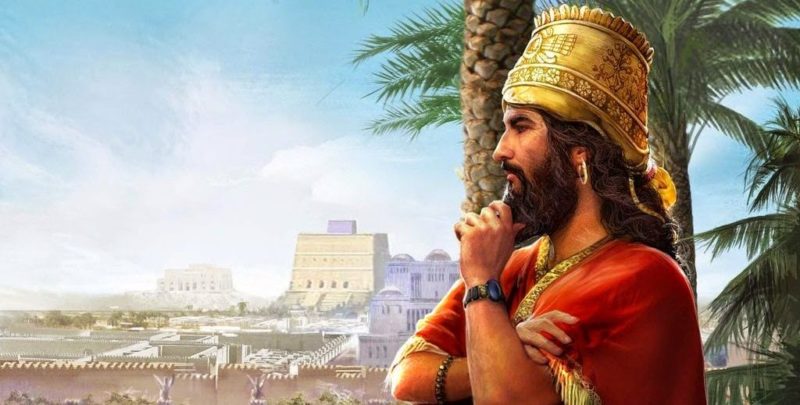 Before the rise of the Babylonian civilization, Mesopotamia was inhabited by the Sumerian civilization, considered one of the first civilizations of mankind. These peoples were conquered first by Akkadian groups and then by the Amorites . From there, long periods of instability and political changes occurred in this area of Mesopotamia.
Before the rise of the Babylonian civilization, Mesopotamia was inhabited by the Sumerian civilization, considered one of the first civilizations of mankind. These peoples were conquered first by Akkadian groups and then by the Amorites . From there, long periods of instability and political changes occurred in this area of Mesopotamia.The first stage of the rise of the Babylonian civilization, known as the Pale-Babylonian Empire, took place between 1792 and 1595 BC. C. The city was occupied in its beginnings by King Sumuabum, considered the founder of the dynasty. Together with his four successors, they formed the vast Babylonian Empire, which reached its peak with the figure of King Hammurabi , the most recognized of the entire dynasty and the one who carried out the legal code that bears his name.
After the death of Hammurabi, Babylon suffered attacks and was left in the hands of the Casitas, who were later defeated by the Assyrians, who inhabited the north of Mesopotamia. Babylon was under Assyrian power for several years and in the middle of 600 BC. C. managed to become independent. With the help of the Medes and the Chaldeans, the Babylonians brought down the Assyrian Empire and conquered their territories.
These conquests began the second stage of the Babylonian Empire, which received the name of the Neo-Babylonian or Chaldean Empire, between 612 and 539 BC. This period was characterized by the conquest of territories by the Babylonian Empire, such as Judah, and the reign of Nebuchadnezzar II stood out, who reigned between 605 and 563 BC. C. and turned Babylon into a great cultural and architectural center. After achieving the domination of Jerusalem, Nebuchadnezzar led the Jewish people into exile in Babylon.
The city of Babylon
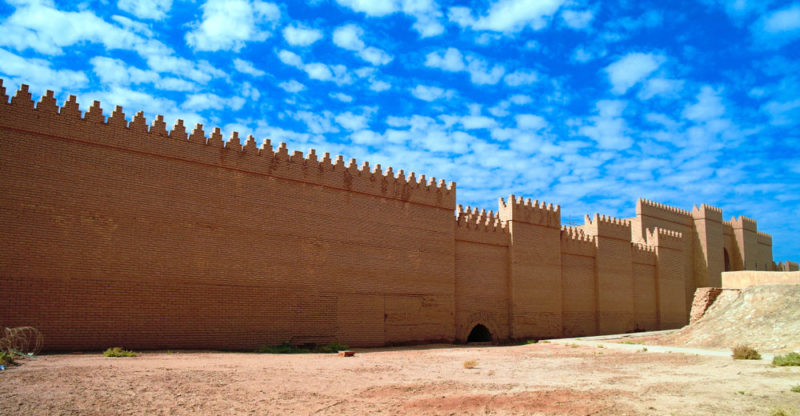 Babylon was the capital of the Babylonian Empire , noted for its architecture and art, and for being the cultural, political, and religious center of the empire.
Babylon was the capital of the Babylonian Empire , noted for its architecture and art, and for being the cultural, political, and religious center of the empire.The ruins of this city are located 90 kilometers from the capital of Iraq, Baghdad and, despite their historical importance, the constant confrontations in the region left a large part of them buried or in poor condition. The first excavations were carried out by German archaeologists, led by Robert Koldewey, in the late 19th and early 20th centuries.
This city was characterized by its temples, canals and hanging gardens . Some of the ruins and relics found by the researchers were removed from their place of origin and are exhibited in museums around the world, such is the case of the Ishtar gate, which is located in the Pergamon Museum in Berlin. During the government of Saddam Hussein (Iraqi president between 1979 and 2003) a replica of the door was made, which was nailed in its original place.
Babylon is also recognized for being part of the biblical tradition , it is alluded to in many books and, above all, in the story of the tower of Babel in Genesis. It is an important city in the tradition of the Jewish people, since the exile and captivity of Babylon took place in Babylon, carried out by the Babylonians after the taking of Jerusalem.
Babylonian art and culture
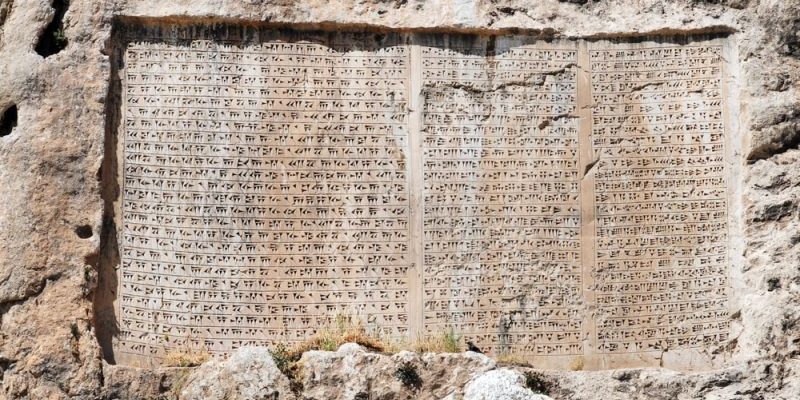 Some of the main cultural features of the Babylonian civilization were:
Some of the main cultural features of the Babylonian civilization were:
- Language . The Babylonian civilization spoke the Akkadian language, a Semitic language, a language that it maintained despite the fact that its founders had been the Amorites. For religious use, they used the Sumerian language.
- Writing . Babylonian civilization adopted the Sumerian system - a cuneiform system of which few records exist. They used the clay board as a base for writing.
- Architecture . The Babylonian civilization made constructions based on straight lines and used exposed vitrified brick for the decoration of temples and palaces. The tall towers or pyramids in stepped form that used to function as temples (called ziggurats) were typical of Mesopotamian peoples. The Babylonians excelled in creating palaces, with emblems such as the Ishtar Gate, and hanging gardens that were made up of plants and trees, and constitute one of the seven wonders of the ancient world.
Contributions of Babylonian culture
Babylon was characterized by being a great cultural and intellectual development center within Mesopotamia. Some of the disciplines in which the Babylonians excelled were:
- Math . The Babylonians established their discoveries or theories in writings on clay tablets. They used a sexagesimal numbering system and made use of geometry and calculation.
- Astronomy . The Babylonians were the forerunners of astronomical charts and made extensive observations of planets and stars . They had knowledge of the distance from the Earth and the Sun and were able to pinpoint solstices and equinoxes. In addition, they divided the year into 12 months and the week into 7 days, a calendar that we inherited until today. On the other hand, it was the Babylonians who determined the elliptical orbit of the Earth.
- Laws . The Babylonians carried out the first written legal code, called the Code of Hammurabi, which consisted of 282 laws. This code was of influence for the legal systems of later civilizations and included, mainly, laws based on the law of retaliation ("an eye for an eye, a tooth for a tooth"). The Hammurabi code was created by King Hammurabi in 1750 BC. C. and was formed by laws that had been dictated by Shamash (god who governed justice) and that evidence the social and economic structure of this civilization.
- Medicine . The Babylonian civilization achieved great and important advances in natural medicine by making use of the natural resources that were available to them, such as honey or medicinal plants, as well as resources or ideas from magic and superstition.
The religion of Babylon
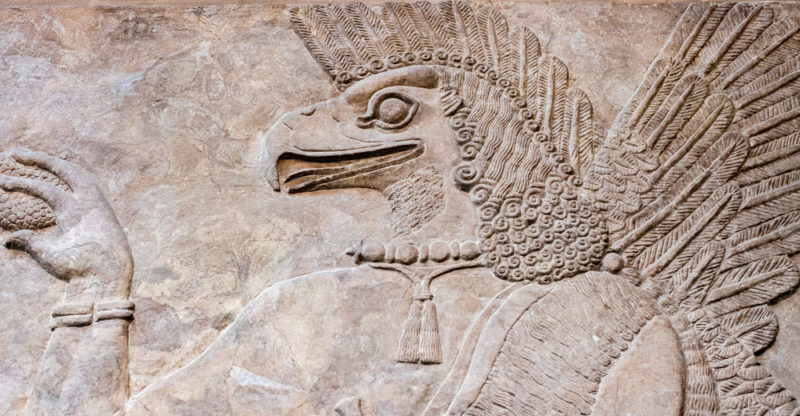 With the reign of Hammurabi, the city of Babylon became a great religious center. The Babylonian religion was polytheistic and was based on the belief of major and minor gods to whom great temples were built. The older ones (like Marduk, god of Jupiter and Babylon) had temples of greater importance.
With the reign of Hammurabi, the city of Babylon became a great religious center. The Babylonian religion was polytheistic and was based on the belief of major and minor gods to whom great temples were built. The older ones (like Marduk, god of Jupiter and Babylon) had temples of greater importance.For this civilization, the gods were terrible and vengeful beings , and they could only be kind and benevolent to the peoples they adopted. The evil gods were represented with the head or shape of an animal , while the kind or protective gods were represented with human figures.
Many of the religious cults of the Babylonian civilization spread and were adopted by other civilizations.
Babylonian political and economic organization
The most important political figure in Babylon was the king , supreme leader of the empire and representative of God on Earth. He lived in the palace and was in charge of all the powers and the dictation of the rules.The king was advised by nobles and priests who formed one of the social classes into which Babylonian society was divided. Freemen (who used to be artisans, merchants or peasants) and slaves were the other two social classes of the time.
The main economic sources of the Babylonians were agriculture and livestock . This was possible thanks to the development of canals and irrigation systems that made it possible to use water from the rivers of the region.
The trade was another important activity in the economy Babylonian. This town traded both by land and by rivers and offered cereals, dates and textiles and imported metals and stone from other regions .
Throughout history, the Babylonians learned to work and alter different metals for the manufacture of weaponry or decoration and they became artisans. Some of the pieces they created and traded were jewelry, bracelets, and metal vessels.
Fall of Babylonian civilization
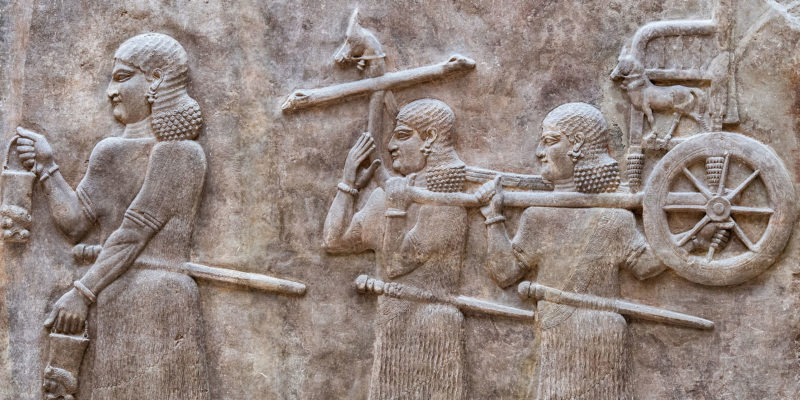 In 556 a. A. Babylonian king assumed the power Nabonido , who when acceding to the throne went to the Arab oasis Taima and left Babylon in the hands of his son Belshazzar. At the same time, in the Persian Empire (one of the strongest empires in the region), King Cyrus II (nicknamed the Great) had ascended the throne with plans to continue the Persian expansion to other territories.
In 556 a. A. Babylonian king assumed the power Nabonido , who when acceding to the throne went to the Arab oasis Taima and left Babylon in the hands of his son Belshazzar. At the same time, in the Persian Empire (one of the strongest empires in the region), King Cyrus II (nicknamed the Great) had ascended the throne with plans to continue the Persian expansion to other territories.In 539 a. C. Ciro and his army invaded and took Babylon , which produced the fall of the Babylonian Empire. Cyrus liberated the people of Israel, who were in exile in Babylon, and annexed the Babylonian territories to the Persian Empire.
The above content published at Collaborative Research Group is for informational and educational purposes only and has been developed by referring reliable sources and recommendations from technology experts. We do not have any contact with official entities nor do we intend to replace the information that they emit.
MA student of the TransAtlantic Masters program at UNC-Chapel Hill. Political Science with a focus on European Studies. Expressed ideas are open to revision. He not only covers Technical articles but also has skills in the fields of SEO, graphics, web development and coding. .
Leave a reply
Your email address will not be published. Required fields are marked *Recent post

Sport: What Is It, Types, Risks, Features, Characteristics and Examples
September 23, 2021

Dogs: Emergence, Features, Characteristics, Feeding and Breeds
September 24, 2021

Story: Definition, Elements, Structure, Features and Characteristics
September 24, 2021

Essay: Definition, Structure, Features, Characteristics, How to Do It
September 24, 2021
